
Malcolm Scott Carpenter was an American naval officer and aviator, test pilot, aeronautical engineer, astronaut, and aquanaut. He was one of the Mercury Seven astronauts selected for NASA's Project Mercury in April 1959. Carpenter was the second American to orbit the Earth and the fourth American in space, after Alan Shepard, Gus Grissom, and Glenn.
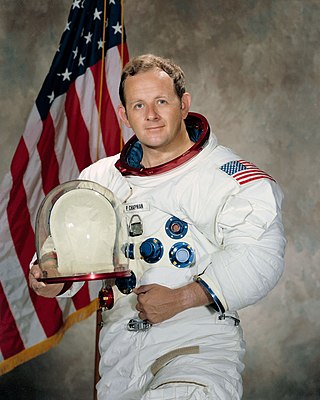
Philip Kenyon Chapman was the first Australian-born American astronaut, serving for about five years in NASA Astronaut Group 6 (1967).

Andrew Sydney Withiel "Andy" Thomas, AO is an Australian and American aerospace engineer and a former NASA astronaut. He has dual nationality; he became a U.S. citizen in December 1986, hoping to gain entry to NASA's astronaut program. He is married to fellow NASA astronaut Shannon Walker.

STS-41-G was the 13th flight of NASA's Space Shuttle program and the sixth flight of Space Shuttle Challenger. Challenger launched on October 5, 1984, and conducted the second shuttle landing at Kennedy Space Center on October 13, 1984. It was the first shuttle mission to carry a crew of seven, including the first crew with two women, the first American Extravehicular activity (EVA) involving a woman (Sullivan), the first Australian-born person to journey into space as well as the first astronaut with a beard and the first Canadian astronaut.

Michael López-Alegría is an astronaut, test pilot and commercial astronaut with dual nationality, American and Spanish; a veteran of three Space Shuttle missions and one International Space Station mission. He is known for having performed ten spacewalks so far in his career, presently holding the second longest all-time EVA duration record and having the fifth-longest spaceflight of any American at the length of 215 days; this time was spent on board the ISS from September 18, 2006, to April 21, 2007. López-Alegría commanded Axiom-1, the first ever all-private team of commercial astronaut mission to the International Space Station, which launched on April 8, 2022, and spent just over 17 days in Earth's orbit.
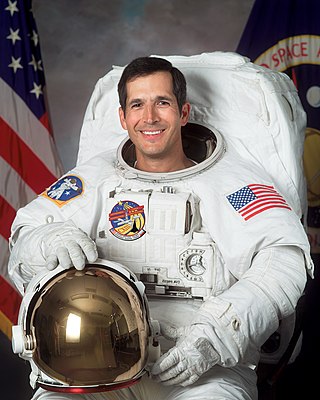
John Bennett Herrington is a retired United States Naval Aviator, engineer and former NASA astronaut. In 2002, Herrington became the first enrolled member of a Native American tribe to fly in space.
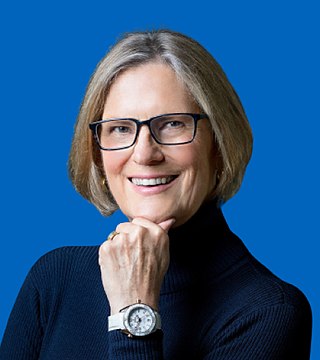
Kathryn Dwyer Sullivan is an American geologist, oceanographer, and former NASA astronaut and US Navy officer. She was a crew member on three Space Shuttle missions.

William McMichael "Bill" Shepherd, , is an American former Navy SEAL, aerospace, ocean, and mechanical engineer, and NASA astronaut, who served as commander of Expedition 1, the first crew on the International Space Station. He is a recipient of the Congressional Space Medal of Honor.
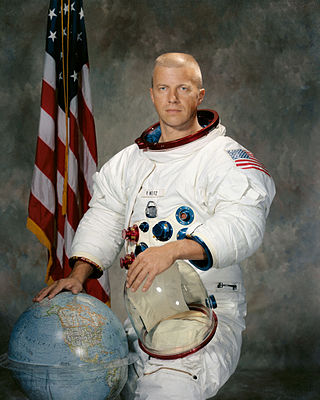
Paul Joseph Weitz was an American naval officer and aviator, aeronautical engineer, test pilot, and NASA astronaut, who flew into space twice. He was a member of the three-man crew who flew on Skylab 2, the first crewed Skylab mission. He was also commander of the STS-6 mission, the maiden flight of the Space Shuttle Challenger.

Robert Lee "Hoot" Gibson, , is a former American naval officer and aviator, test pilot, and aeronautical engineer. A retired NASA astronaut, he also served as Chief of the Astronaut Office from 1992 to 1994. Today Gibson is active as a professional pilot, racing regularly at the annual Reno Air Races. He was inducted into the U.S. Astronaut Hall of Fame in 2003 and the National Aviation Hall of Fame in 2013, and has received several military decorations throughout his career.

Kathryn Patricia "Kay" Hire is a former NASA astronaut and Captain in the U.S. Navy Reserve who has flown aboard two Space Shuttle missions.

Mario Runco Jr. is a former United States Naval officer and NASA astronaut. He was selected as an astronaut with in 1987. He flew three Space Shuttle missions, performed a spacewalk on his second mission, and is now retired both from NASA and the U.S. Navy.

Pierre Joseph Thuot is a retired United States Navy captain and NASA astronaut. He went into space three times, spending over 650 hours in space, including over 15 hours in three space walks. He is a former U.S. record holder for time spent on one spacewalk, and participated in the first three-person spacewalk.

The Naval Postgraduate School (NPS) is a public graduate school operated by the United States Navy and located in Monterey, California.

Tenix is a privately owned Australian company involved in a range of infrastructure maintenance and engineering products and services to the utility, transport, mining and industrial sectors in Australia, New Zealand, the Pacific Islands, and the United States.

Heidemarie Martha Stefanyshyn-Piper is an American Naval officer and former NASA astronaut. She has achieved the rank of Captain in the United States Navy. She is also a qualified and experienced salvage officer. Her major salvage projects include de-stranding the tanker Exxon Houston off the coast of Barbers Point, on the island of Oahu, Hawaii, and developing the plan for the Peruvian Navy salvage of the Peruvian submarine Pacocha.
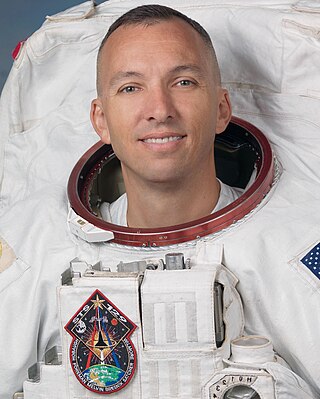
Randolph James "Komrade" Bresnik is a retired officer in the United States Marine Corps and an active NASA astronaut. A Marine Aviator by trade, Bresnik was selected as a member of NASA Astronaut Group 19 in May 2004. He first launched to space on STS-129, then served as flight engineer for Expedition 52, and as ISS commander for Expedition 53.

Space nursing is a specialty that works with astronauts to determine medical fitness for their missions, equips NASA team members to handle emergencies in orbit and researches the effects of space travel on the human body. The career got its start during the space race of the 1960s and has grown—both in terms of number of people in the field and knowledge base—ever since. Research conducted by medical professionals in the aeronautics field has led to many breakthroughs in disease treatment of earthbound patients and the discipline continually develops new technology to make space medicine more effective.

The following index is provided as an overview of and topical guide to underwater divers:

This is a list of underwater divers whose exploits have made them notable. Underwater divers are people who take part in underwater diving activities – Underwater diving is practiced as part of an occupation, or for recreation, where the practitioner submerges below the surface of the water or other liquid for a period which may range between seconds to order of a day at a time, either exposed to the ambient pressure or isolated by a pressure resistant suit, to interact with the underwater environment for pleasure, competitive sport, or as a means to reach a work site for profit or in the pursuit of knowledge, and may use no equipment at all, or a wide range of equipment which may include breathing apparatus, environmental protective clothing, aids to vision, communication, propulsion, maneuverability, buoyancy and safety equipment, and tools for the task at hand.




















